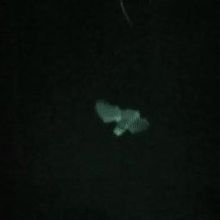hearing

Infographic: Animal Embryos Coopt Sound to Survive and Thrive
Amanda Heidt | Nov 1, 2021 | 1 min read
Across the tree of life, animals use sound and other vibrations to glean valuable sensory information about their environments even before they are born.

Embryonic Eavesdropping: How Animals Hear and Respond to Sound
Amanda Heidt | Nov 1, 2021 | 10+ min read
Recent findings buck the traditional idea that embryos are passive agents and instead suggest that by tuning into vibrations, organisms can better prepare to enter the outside world.

Slideshow: How Animal Embryos Eavesdrop on the Outside World
Amanda Heidt | Nov 1, 2021 | 4 min read
Watch and listen to reptiles, amphibians, insects, and birds respond to sound from inside their eggs.

Spider Uses Its Web Like a Giant Engineered Ear
Dan Robitzski | Oct 29, 2021 | 4 min read
Bridge spiders “outsource” their hearing by building webs that double as acoustic arrays, allowing them to perceive sounds from great distances.

This Ogre-Faced Spider Can Hear Prey Through Its Legs
Katarina Zimmer | Oct 29, 2020 | 5 min read
The tropical net-casting spider Deinopis spinosa joins several other arachnid species that can hear sounds from afar without the help of a web, or even ears—an ability that aids its unique hunting tactics.

Mark Konishi, Pioneer of Studying Behavior’s Neural Basis, Dies
Ashley Yeager | Aug 14, 2020 | 4 min read
The Caltech scientist was revered for his work on the neurobiology of birdsong and owls’ ability to home in on their prey.

New Hearing Device Isolates Voices
Jef Akst | May 16, 2019 | 2 min read
An experimental hearing aid differentiates speakers and monitors the wearer’s brain activity to amplify the one she is trying to listen to.

The Biggest Science News of 2018
Kerry Grens | Dec 27, 2018 | 7 min read
From disastrous scientific setbacks to the upending of scientific dogma and the end of a 40-year search for a protein

Suit Filed to Stop Seismic Airgun Blasting in Atlantic Ocean
Ashley Yeager | Dec 12, 2018 | 2 min read
Eight environmental groups took the legal measure in an effort to protect North Atlantic right whales and other marine organisms.

Long-Sought Hearing Channel Protein Found
Abby Olena, PhD | Aug 22, 2018 | 3 min read
After a decades-long pursuit, researchers have confirmed the identity of the pore of the mechanotransduction channel in vertebrates’ inner ear hair cells.

Ultrasound Fires Up the Auditory Cortex—Even Though Animals Can’t Hear It
Abby Olena, PhD | May 24, 2018 | 4 min read
Researchers have been using ultrasound to control brain activity, but studies in mice and guinea pigs show it also stimulates the auditory system, presenting a confounder for direct neural stimulation.

Proposed Seismic Surveys Raise Concern Over Health of Marine Life
Ashley Yeager | May 11, 2018 | 5 min read
The Atlantic has been free of intense air-gun blasts to probe for oil and gas for 30 years, and researchers fear for endangered North Atlantic right whales and other animals.

RNA Injection Restores Hearing in Guinea Pigs
Abby Olena, PhD | Apr 18, 2018 | 4 min read
Researchers deliver small interfering RNAs loaded into nanoparticles into the ears of adult guinea pigs to regenerate hair cells damaged by noise.

Image of the Day: Bat Attack!
The Scientist and The Scientist Staff | Mar 15, 2018 | 1 min read
Barbastelle bats trick moths with muffled echolocation calls.

CRISPR Helps Mice Hear
Abby Olena, PhD | Dec 20, 2017 | 3 min read
Researchers reduce the severity of hereditary deafness in mice with the delivery of CRISPR-Cas9 protein-RNA complexes that inactivate a mutant gene in their inner ears.

Teaching Humans to Echolocate
Diana Kwon | Oct 1, 2017 | 4 min read
By investigating the science behind “seeing” with sound, researchers hope to help blind individuals independently navigate the world.

Introducing Batman
The Scientist | Sep 30, 2017 | 1 min read
Daniel Kish, who is blind, uses vocal clicks to navigate the world by echolocation.

Image of the Day: Ears-in-a-Dish
The Scientist | May 1, 2017 | 1 min read
Using three-dimensional culture, which allows cells to grow in a ball-shape aggregate, scientists created inner ear organoids containing sensory neurons and hair cells.

Understanding Music Heard Through Cochlear Implants
Jef Akst | Mar 1, 2017 | 4 min read
Music sounds very different to cochlear implant users. Researchers are trying to improve the experience.
